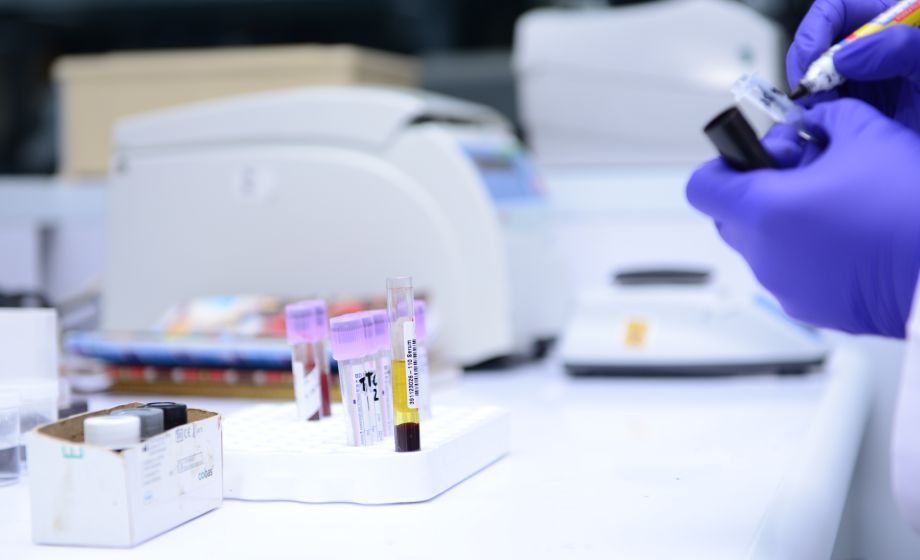Q&A Report: Longitudinal Plasma Samples: Paving the Way for Precision Oncology

The answers to these questions have been provided by:
Mirka Allerding, PhD, Scientist at Indivumed Services
Anna Sophie Skof, MSc, Scientist at Indivumed Services
You said that the ctDNA amount in samples is only 0.1-10%. I’d imagine the isolation of cfDNA could be challenging. Do you have a recommended method or kit for the isolation? And what concentrations could be expected?
For quality checks we are using the Maxwell RSC system with the ccfDNA extraction kit, this works for us. On average we get concentrations around 5-30 ng/ml plasma, but there are also cases where we get more than 150 ng. The concentration highly dependents on the cancer type, stage, treatment, and the overall course of disease.
How different is it to isolate cfDNA from plasma versus cell supernatants or pleural fluids? And can ctDNA be isolated from frozen total blood samples?
Comparative analyses have shown that plasma represents the best tool to monitor cancer patients in clinical practice. High levels of cfDNA, originating from degrading white blood cells, are sub-optimal because this can decrease the sensitivity of ctDNA detection. Therefore, one would like to avoid all circumstances that can lead to an increase in cfDNA levels of non-tumor cells. As most studies use plasma for ctDNA isolation, our experience with other liquids is limited. While our protocols are optimized for plasma samples, we only isolate cfDNA for internal quality controls. Whether a different DNA isolation kit needs to be used for different liquid biopsy types (e.g., cell supernatant, pleural fluid) should be checked in the manufacturer’s product guides.
How do you search for sample sets and what criteria do you consider?
Basically, every data point from our clinical data can be considered to filter for suitable samples. Common requests include specific treatment or used substance, histological type, stage, treatment history, and outcome. We also offer preData for our customers to give an impression of what to expect.
What is the maximum and minimum amount of plasma I can buy?
Of course, plasma amount is also something we consider. We sell plasma in 1 ml aliquots. You can buy from 1 ml to up to 12 ml plasma per timepoint, depending on the availability of each individual case.
Can you ensure that T0 samples are treatment-naïve?
Owing to the clinical actuality, our samples are not specifically labeled as treatment-naïve, but we do use a set of criteria to approximate this quality. We filter for cases that have no documented treatment history, are before surgery, and that were recently diagnosed.
When you showed the mutations that you test for, are those tests on the germline, the ctDNA, or do they reflect a test that was performed on the patient's tumor?
The biomarker and mutation information from our clinical data comes directly from the cooperating clinics. They collect it either themselves or from reports from the hospital, where generally the patient’s tumor tissue is used. No further tests are done on our side.
Do you try to quantify the circulating tumor cells (CTC) cells with flow cytometry in the blood draw over time?
As we process the blood to cell-free plasma, detection of circulating tumor cells is no longer possible. Cells are enriched through centrifugation in a different sample fraction and discarded.
How can you differentiate between healthy and tumor cfDNA?
cfDNA from healthy or tumor cells can only be differentiated by testing for and identifying tumor-specific markers. Genetic alterations that need to be detected from ctDNA are diluted by both the non-tumoral cfDNA and by the non-mutated ctDNA. Therefore, highly sensitive and specific detection methods are required to provide a relevant ctDNA-based diagnosis.
When you said ctDNA could be an indicator in the prognosis or the cure of a disease after a course of treatment, do you believe it would be interesting or detectable to measure ctDNA in long-term breast cancer survivors, for example, in a sample of survivors 3 years post-treatment?
Studies have shown that ctDNA can be used for the detection of minimal residual disease (MRD) and relapse, specifically due to its early detection compared to general imaging techniques. But still more research is needed to implement these tests in clinical practice. If ctDNA levels rise, e.g., in breast cancer survivors that have been without/with low levels for the past year(s), this could be an indication for relapse. The levels of ctDNA however would probably be very low, so tests need to be very specific and very sensitive to detect this.